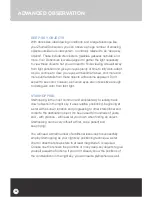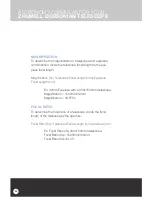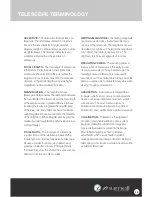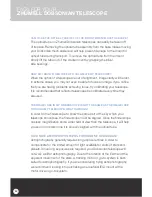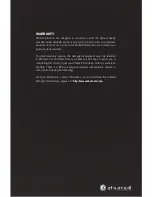
26
THE MOON
The Earth's moon is one of the easiest and most rewarding targets
at which to point your telescope. Its rocky, cratered surface is close
enough to be rendered in some detail, and allows for satisfying
exploration. The best time for lunar viewing is during its partial phases,
when shadows fall on the craters and canyon walls to give them
definition. Even though the full moon may look like a tempting target,
the light is too bright and the definition too low for optimal viewing.
When viewed through a telescope, even a partial-phase moon is very,
very bright. Using a Moon filter helps to dim the glare - these and other
filters simply thread underneath the bottom of the telescope eyepiece.
THE STARS
Through your telescope, stars will appear much as they do to the
naked eye - as tiny points of light against a dark sky. Even powerful
telescopes cannot magnify stars to appear as anything more than
these pinpoints. You can, however, enjoy the different colors of their
glow and locate many beautiful double- and multiple-stars. Two
popular targets are the "Double-Double" in the constellation Lyra and
the two-color double star Albireo in Cygnus.
THE PLANETS
The planets are beautiful and popular targets for astronomers, but they
can be more difficult to keep track of than the stars or moon. Planetary
position charts can readily be found online or in any astronomical
publication. Sun and Moon aside, the brightest objects in the night sky
are Venus, Mars, Jupiter, and Saturn. With practice, you will be able to
render these in some detail. Generally, the apparent size of planets is
quite small, and higher-power eyepieces are recommended for best
results.
OBSERVATION TIPS FOR YOUR
ZHUMELL DOBSONIAN TELESCOPE

















